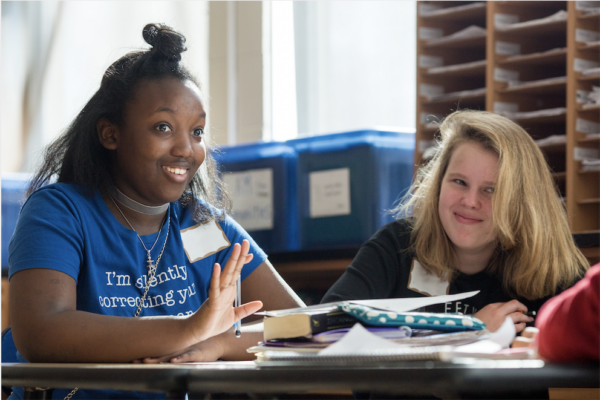This commentary was initially published by RealClear Policy.
The survey results shocked the staff at Herbert Hoover High School in Fresno, California. Only a third of their students believed they could master the toughest topics in their classes. Less than half responded positively to the question, “I feel like I’m part of this school.” Parents felt Hoover was far safer than teachers did.
Fresno educators had no doubt that these problems were contributing to the school’s troubling academic performance. But they had no easy answers for turning around the school climate or improving their students’ sense of self. Amid a growing consensus about the importance of the social-emotional dimension of learning, schools and districts are faced with two vexing questions: How to assess this important area and how to improve it.
The school climate survey has emerged as one answer. Several states have included these surveys in their new accountability formulas for assessing schools under the Every Student Succeeds Act, and others are exploring their use.
Fresno Unified was one of six major school systems, known together as the CORE Districts, that have pioneered a survey looking at how students view not only their school but also their own learning capabilities. The CORE Districts piloted the surveys for two years and since 2016 have administered them annually to the nearly 1 million students in the CORE network, reporting the results at the school and district levels. Fresno also surveys school staff and parents.
[Read More: CORE Lessons: Measuring the Social and Emotional Sides of Student Success]
The results shed light on some troubling trends in Fresno, Los Angeles and the other CORE districts. Among them: many girls lose their self-confidence as they reach middle school and African American students feel less of a sense of belonging in school as they grow older.
To understand how school districts are responding to these results, we dug into the research on the CORE surveys and interviewed dozens of district administrators, teachers, and staff, and studied three schools in-depth in the 74,000-student Fresno district in the San Joaquin Valley. It proved to be a revealing case study of how efforts to improve social-emotional learning play out on the ground.
Fresno administrators have leveraged the survey results to promote new ways to strengthen the education of the school district’s many impoverished students, expanding that work beyond teacher quality and other traditional strategies.
The Fresno central office has established climate and culture teams in every school and has created a team of roving experts to help school staff members interpret results accurately and respond in the most effective ways, prioritizing efforts to improve students’ sense of belonging and their confidence in themselves as learners, while reducing school discipline problems.
More informally, Fresno educators have used skits, videos, essays and personal outreach to students to encourage students’ social and emotional development. To help convey the concept of growth mindset, one middle school created a prop called Mr. Brain, built from a mail order plastic brain with Blues Brothers sunglasses attached to a badminton racket.
[Read More: Measuring Social-Emotional Skills, Carefully]
Fresno Unified’s experience suggests that the survey results should be used for school improvement, not accountability. Measurement experts worry that students and teachers could skew the survey results if they are tied to school ratings. And breaking down the results by student or classroom risks stigmatizing students or teachers. Fresno wisely focuses instead on grade-level, school-level and district-level trends.
Many Fresno educators told us they welcomed the school district’s new focus on school climate. They view the surveys as a way to help students, not as something they should be wary of — despite pushback from , which opposed collecting the information. And many educators were surprised by what they learned. “Most of the children here are upbeat, so it was very surprising to learn that a group of students said ‘I can’t rise to the challenge,’” a 2nd-grade teacher told us.
There’s lots more work to do to identify the best solutions to the problems the surveys surface. But Fresno’s lesson suggests that student, teacher, and parent surveys can be a significant step down an important new path to school improvement and student success.


